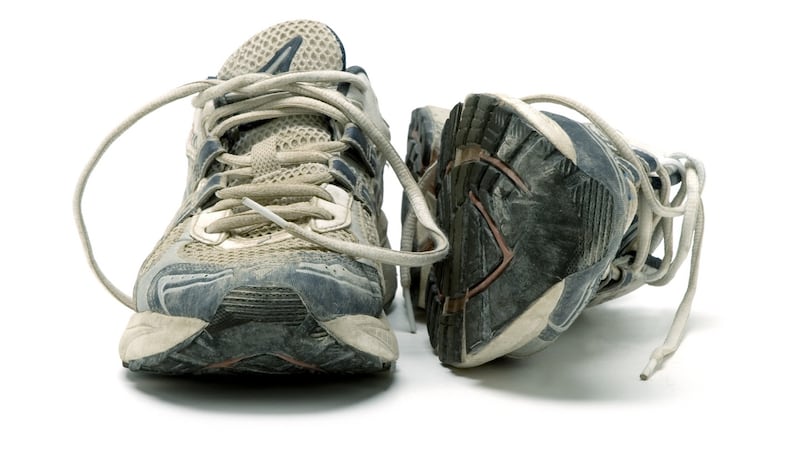Getting caught in the rain is depicted on screen with near-comic frequency. From make-out scenes in Nicholas Sparks films to the drama of Shawshank Redemption and Point Break, stormy skies have long been a marker of heightened emotions, desperate declarations and a willingness to well, get wet.
With current weather patterns already making this a particularly wet winter, on the upside, we can plan grand romantic gestures with a little more oomph. But this doesn’t mean our clothes have to suffer. Here’s how to care for your outfit after any dramatic downpour.
First steps
When you get home after being caught in the rain, assess what you’re wearing and how drenched it is to determine what to do next. Corey Simpson, a communications manager for clothing company Patagonia, says: “Some material may not need any care after being caught in the rain; others, like natural fabrics, may need to be dried.”
Damp clothes should be hung on a rack to dry or washed straight away
Garments like coats and jackets that have natural water resistance can just be shaken out or wiped off, while T-shirts, jumpers and trousers that have absorbed rainwater will require more attention.
Once you’ve taken wet clothes off, it’s best not to leave them sitting in a pile or inside a clothes basket, as this can result in mildew and smells. Damp clothes should be hung on a rack to dry or washed straight away.
If you’ve been particularly adventurous (or unlucky) and your clothes are dirty as well as wet, Simpson says to “wipe off chunks of mud and debris” first, “then wash the garment according to the manufacturer’s instructions”.
For delicate fabrics like fine wool and silk, a trip to the dry cleaner may be in order to prevent water stains.
Re-upping repellence
Simpson says synthetic fabrics coated “with a durable water repellent usually fare best in the rain” but they also require special treatment to maintain their performance.
Unfortunately, water repellence doesn’t last forever. It can be affected by dirt, your skin’s natural oils, sunscreen and smoke, so it’s important to keep your raincoat or puffer jacket clean. Simpson says: “Be sure to wash and dry your garment often – this helps remove oils and anything that can hinder the performance of your puffer or raincoat.”

Check the care instructions, but most nylon or polyester rain jackets and waterproof shells are machine washable. Use a performance wear-specific cleaner.
Proper drying is also important to maintain water-repellent properties. Raincoats should be run through the dryer on medium heat for at least half an hour, he suggests. If care instructions permit, ironing can also improve water-repellent properties, but this should be done over a towel on a very low heat to avoid melting your jacket.
For less technical rain garments – like waxed cotton parkas or poly-cotton trench coats – it is best to follow the care instructions on the label. Ironically, some rain-repellent trench coats can be dry clean only.
Puffer jackets should be washed with a down-specific detergent, and can take a long time to dry. They should be left to drip dry for between 24 to 48 hours, while being given the occasional fluff to prevent the down from clumping. When almost dry, put the puffer in the dryer on a low heat with some dryer balls to completely break up any remaining clumps.
If the water-repellent properties of your outerwear have diminished after a few years of wear, the good news is you can apply a fresh layer.

Special care for shoes
Getting caught in the rain is the number one reason to waterproof your shoes and trainers when you first buy them. Apply three coats of a waterproofing spray to your leather shoes, then reapply every six months.
The same goes for trainers – the first and most important step is protection. A waterproofing spray will form a barrier around the sneaker, making it easier to care for.
If the rain has already got to your shoes, before drying them out, make sure they’re clean. Use a material-specific shampoo to prevent dirt from drying into the shoe, then place leather shoes somewhere dry, away from heaters and out of direct sunlight to dry off. Once dry, apply a balm to nourish the leather.
For trainers that have been soaked, take out the laces and insoles and leave them outside in the sun. Sneakers can get mouldy if they’re put in wardrobes or left indoors while wet. – Guardian









